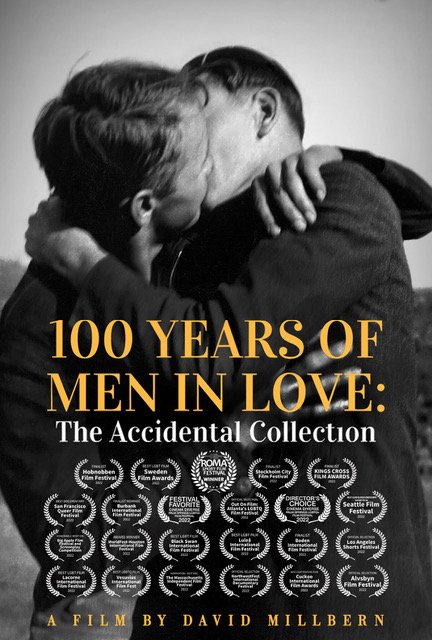What the Gaze Reveals
Look into their eyes, these tender young men of a century or two ago.
In haunting vintage tintypes from the 1840s, secret snapshots taken in mirrors, clandestine shoots in bedrooms, narrow strips of private images taken behind a photo booth curtain … They are all evidence that their private love existed, that it was confident and real, through their rediscovery, it endures.
A total of 350 of nearly 4,000 photographs from the collection of the married couple Hugh Nini and Neal Treadwell is the foundation of the 2022 film documentary 100 Years of Men in Love: The Accidental Collection, directed by Emmy-winning actor-producer David Millbern.
The 57-minute film is based on Nini and Treadwell’s 2020 photo book Loving: A Photographic History of Men in Love, 1850s-1950s.
Like messages placed in a bottle and tossed into the sea, these intimate vintage photographs—some joyful, some sensual, always loving—were accidentally discovered starting in the 1990s by Nini and Treadwell in flea markets, tag, garage and estate sales where discoveries were often found in shoe boxes filled with a family’s long-forgotten images. Collecting these specific photographs of male couples gradually became their passion.
Making the film
The film was made with during the pandemic without Nini and Treadwell even meeting Millbern in person with Millbern shooting scenes of the couple remotely using a New York film crew.
The power of the film comes in the contemplative relationship between the seer and the seen as the camera slowly zooms closer.
“It’s not just a quick montage of images,” says Millbern from his home in Los Angeles. “We let the audience study the photos and the significance of the times when these gentlemen put everything on the line to take those pictures. They were doing this when being a homosexual was illegal, when they could have lost their jobs.”
The film is a completely different experience than one of merely flipping through pages of a book, says Millbern.
“I want audiences to slowly immerse themselves with images of these men from the past,” he says. “I want people to be on a journey: with the film’s music; and quotations about love from gay writers like James Baldwin, Walt Whitman and Henry David Thoreau; and hearing the words taken from the backs of the photos spoken by me as these couples’ avatars come alive.
“We escalate the amount of intimacy as the film proceeds,” says Millbern. “We start with just the eyes, then body parts….[CONTINUED]




